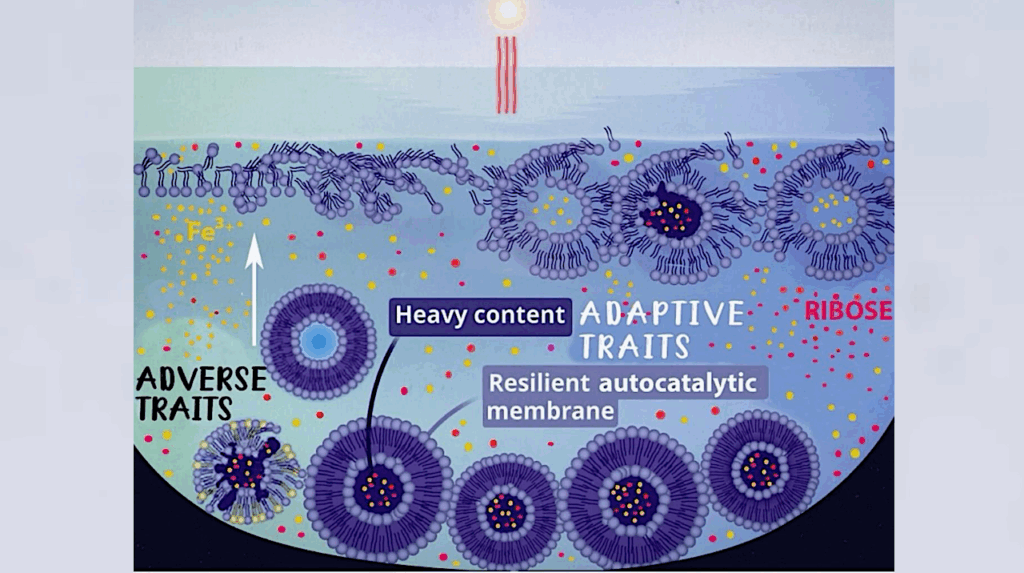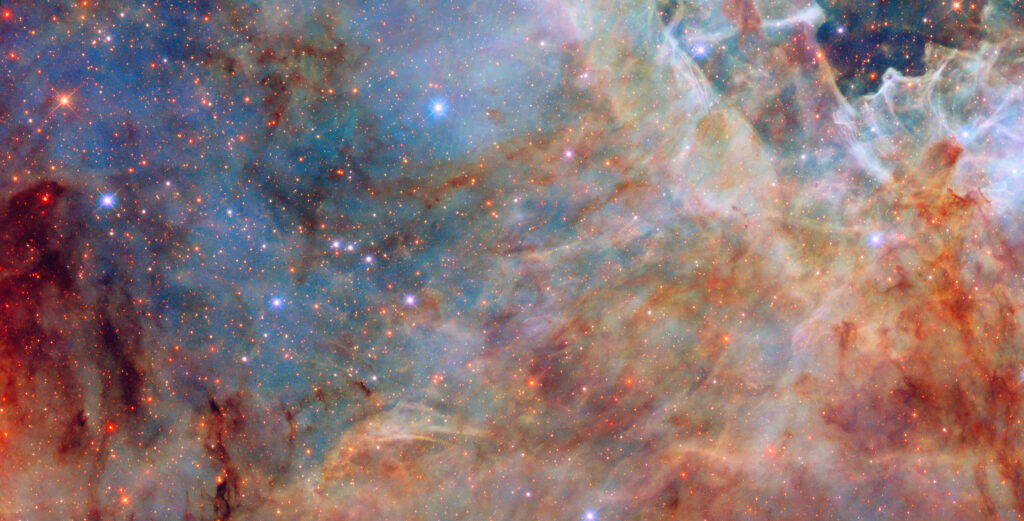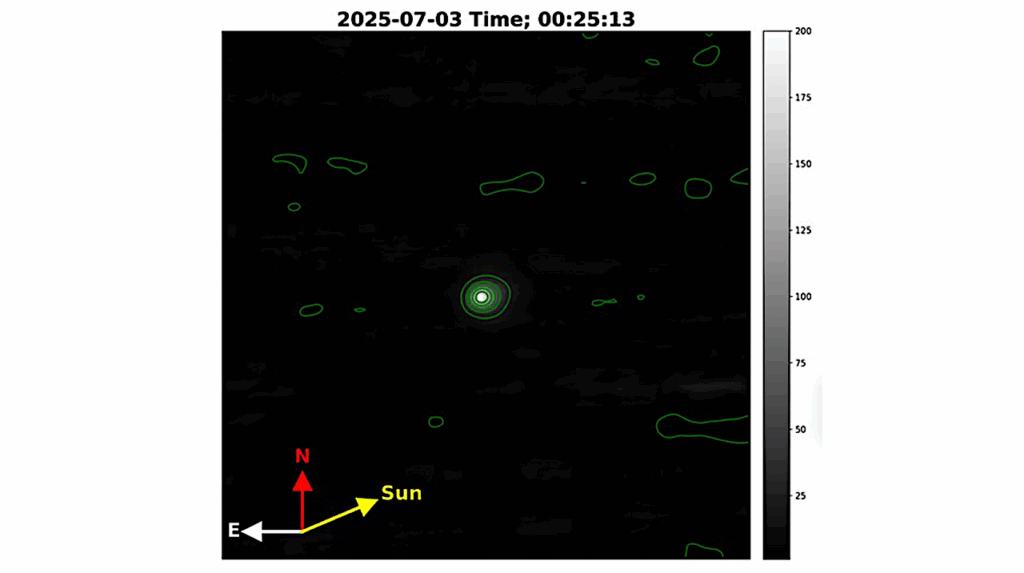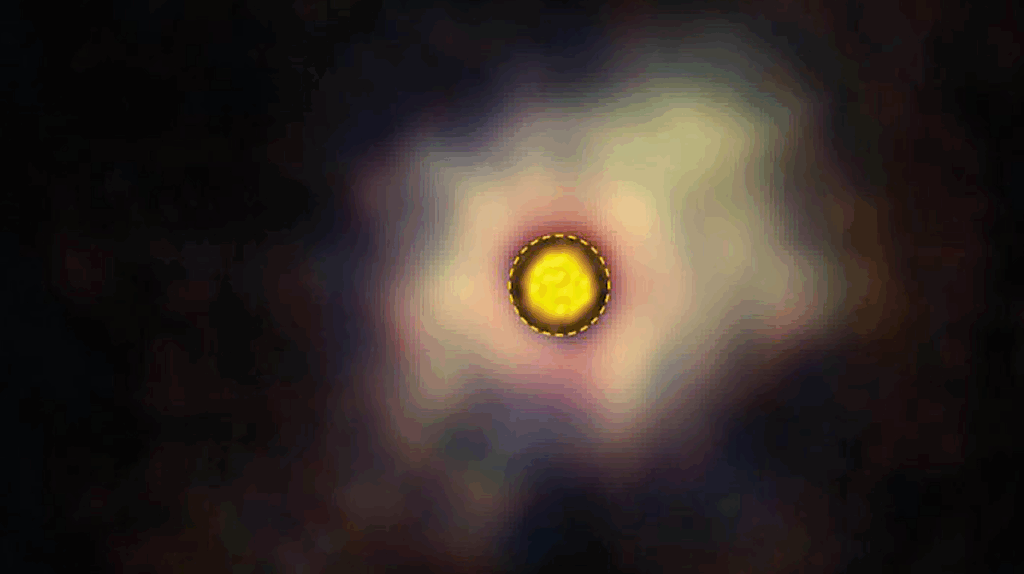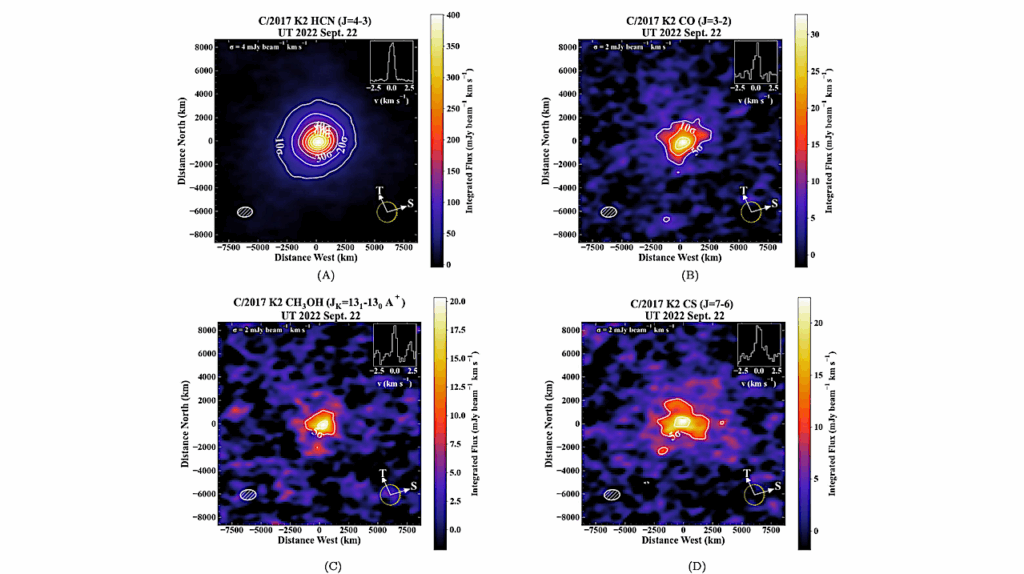A High Angular Resolution View Of The PAH Emission In Seyfert Galaxies Using JWST/MRS Data

Polycyclic Aromatic Hydrocarbons (PAHs) are carbon-based molecules, which are ubiquitous in a variety of astrophysical objects and environments.
In this work, we use JWST/MIRI MRS spectroscopy of 3 Seyferts to compare their nuclear PAH emission with that of star-forming regions.
This study represents the first of its kind using sub-arcsecond angular resolution data of local luminous Seyferts (Lbol>10^44.89 erg/s) on a wide wavelength coverage (4.9-28.1 micron). We present an analysis of their nuclear PAH properties by comparing the observed ratios with PAH diagnostic model grids, derived from theoretical spectra. Our results show that a suite of PAH features is present in the innermost parts (~0.45 arcsec at 12 micron; in the inner ~142-245 pc) of luminous Seyfert galaxies.
We find that the nuclear regions of AGN lie at different positions of the PAH diagnostic diagrams, whereas the SF regions are concentrated around the average values of SF galaxies.
In particular, we find that the nuclear PAH emission mainly originates in neutral PAHs. In contrast, PAH emission originating in the SF regions favours ionised PAH grains. The observed PAH ratios in the nuclear region of AGN-dominated galaxy NGC 6552 indicate the presence of larger-sized PAH molecules compared with those of the SF regions. Therefore, our results provide evidence that the AGN have a significant impact on the ionization state (and probably the size) of the PAH grains on scales of ~142-245 pc.
I. García-Bernete (1), D. Rigopoulou (1), A. Alonso-Herrero (2), F. R. Donnan (1), P. F. Roche (1), M. Pereira-Santella (4), A. Labiano (5,3), L. Peralta de Arriba (2), T. Izumi (6), C. Ramos Almeida (7,8), T. Shimizu (9), S. Hönig (10), S. García-Burillo (4), D. J. Rosario (11), M. J. Ward (12), E. Bellocchi (13,14), E. K. S. Hicks (15), L. Fuller (16), C. Packham (16) ((1) Department of Physics, University of Oxford, UK, (2) Centro de Astrobiología (CAB), CSIC-INTA, Villanueva de la Cañada, Spain, (3) Centro de Astrobiología (CAB), CSIC-INTA, Torrejón de Ardoz, Spain, (4) Observatorio Astronómico Nacional (OAN-IGN)-Observatorio de Madrid, Spain, (5) Telespazio UK for the European Space Agency (ESA), ESAC, Spain, (6) National Astronomical Observatory of Japan, Osawa, Japan, (7) Instituto de Astrofísica de Canarias, Spain, (8) Departamento de Astrofísica, Universidad de La Laguna, Spain, (9) Max-Planck-Institut fur extraterrestrische Physik, Germany, (10) Department of Physics \& Astronomy, University of Southampton, UK, (11) School of Mathematics, Statistics and Physics, Newcastle University, UK, (12) Centre for Extragalactic Astronomy, Durham University, UK, (13) Departamento de Física de la Tierra y Astrofísica, Universidad Complutense de Madrid, Spain, (14) Instituto de Física de Partćulas y del Cosmos IPARCOS, Universidad Complutense de Madrid, Spain, (15) Department of Physics \& Astronomy, University of Alaska Anchorage, USA, (16) The University of Texas at San Antonio, San Antonio, USA)
Comments: 12 pages, 10 figures. Submitted to A&A
Subjects: Astrophysics of Galaxies (astro-ph.GA); Cosmology and Nongalactic Astrophysics (astro-ph.CO); Solar and Stellar Astrophysics (astro-ph.SR)
Cite as: arXiv:2208.11620 [astro-ph.GA] (or arXiv:2208.11620v1 [astro-ph.GA] for this version)
https://doi.org/10.48550/arXiv.2208.11620
Focus to learn more
Submission history
From: Ismael Garcia-Bernete Dr.
[v1] Wed, 24 Aug 2022 15:44:30 UTC (5,287 KB)
full paper https://arxiv.org/abs/2208.11620
Astrobiology, Astrochemistry


